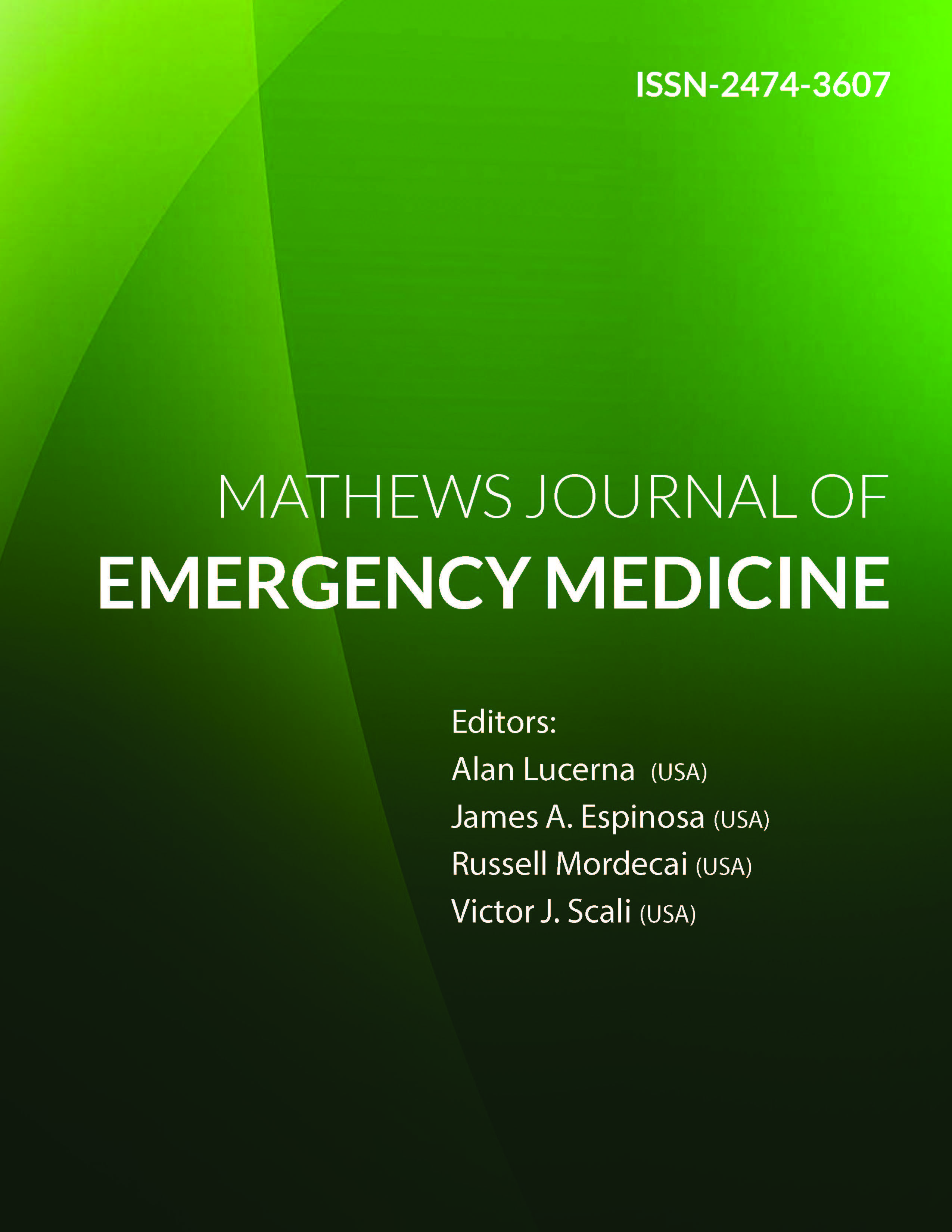
Information Links
Previous Issues Volume 2, Issue 2 - 2017
Change Takes Time: EMS as the Spark Plug for Faster Acute Ischemic Stroke Care
Karen Greenberg*, Alexander Lesenskyj, Daniel Eichorn, Christina R. Maxwell, Michael D'Ambrosio, Erol Veznedaroglu, Mandy J. Binning
Drexel Neurosciences Institute, Drexel University College of Medicine, 219 North Broad St 7th Floor, Philadelphia, USA.
Corresponding Author: Karen Greenberg, Drexel Neurosciences Institute, Drexel University College of Medicine, 219 North Broad St 7th Floor, Philadelphia, USA Tel: (215) 762-6915; E-Mail: [email protected]
Received Date: 06 Jun 2017
Accepted Date: 23 Jun 2017
Published Date: 27 Jun 2017
Copyright © 2017 Greenberg K
Citation: Greenberg K, Lesenskyj A, Eichorn D, Maxwell CR, et al. (2017). Change Takes Time: EMS as the Spark Plug for Faster Acute Ischemic Stroke Care. Mathews J Emergency Med. 2(2): 025.
ABSTRACT
Introduction :
It is well documented that a Prehospital Stroke Alert (PHSA) protocol leads to decreased treatment times for stroke patients. Outcomes measured typically include Door to Physician (DTP), Door to CT (DTCT), and Door to Needle (DNT) times. Our comprehensive stroke center's PHSA system has been in place since 2012. This study evaluates 3 specific endpoints. First, Emergency Medical Services (EMS) improve their recognition of stroke symptoms as they gain experience with PHSA. Second, a PHSA protocol decreases treatment times of DTP, DTCT, and DNT over a study period of 3 years compared to times recorded prior to implementation of the PHSA system. Third, when patients present to our Neurologic Emergency Department (Neuro ED) as a PHSA, rather than a non-PHSA, the treatment times are markedly decreased, and acute ischemic stroke care is significantly expedited.